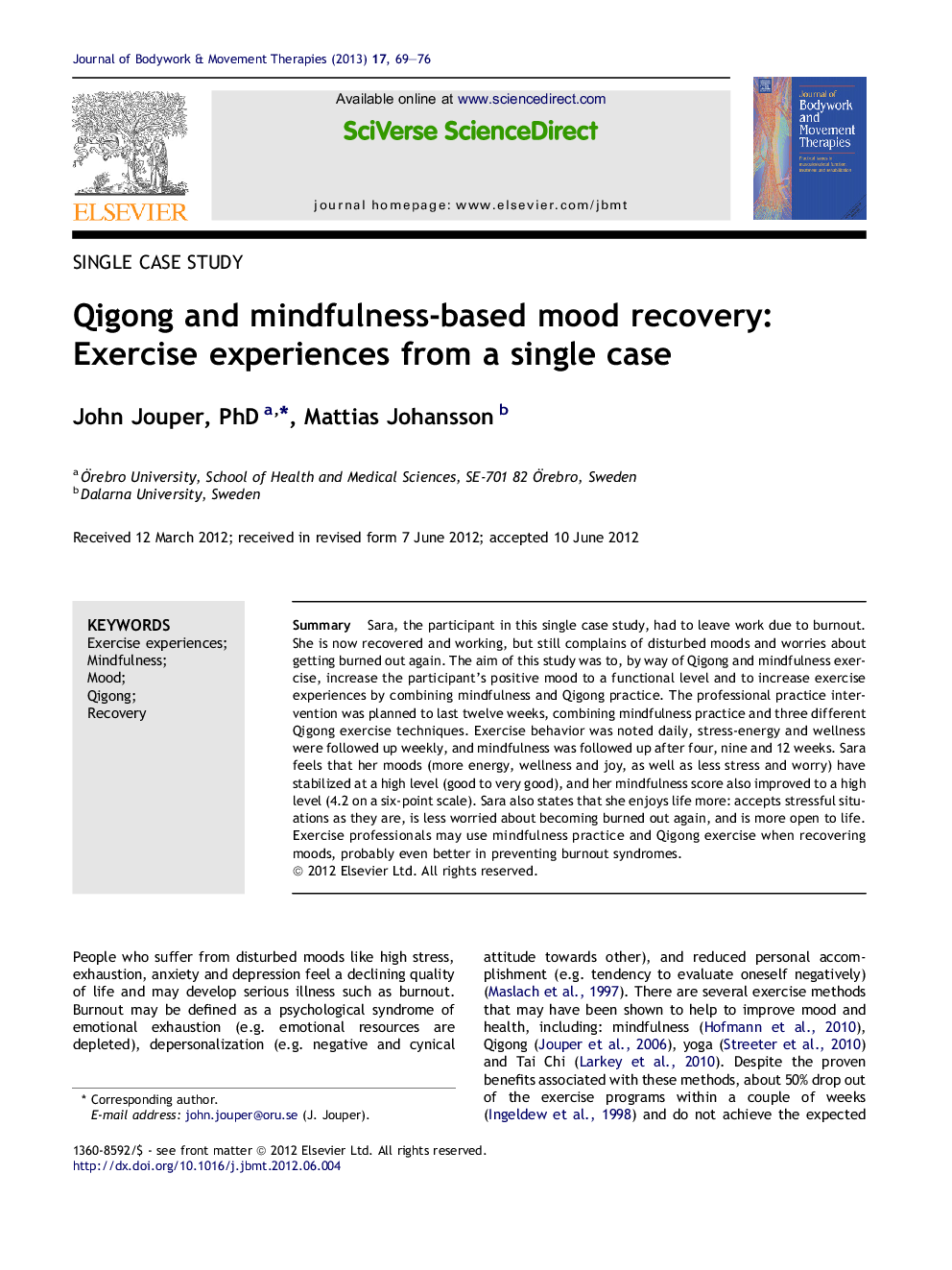| Article ID | Journal | Published Year | Pages | File Type |
|---|---|---|---|---|
| 2619594 | Journal of Bodywork and Movement Therapies | 2013 | 8 Pages |
SummarySara, the participant in this single case study, had to leave work due to burnout. She is now recovered and working, but still complains of disturbed moods and worries about getting burned out again. The aim of this study was to, by way of Qigong and mindfulness exercise, increase the participant's positive mood to a functional level and to increase exercise experiences by combining mindfulness and Qigong practice. The professional practice intervention was planned to last twelve weeks, combining mindfulness practice and three different Qigong exercise techniques. Exercise behavior was noted daily, stress-energy and wellness were followed up weekly, and mindfulness was followed up after four, nine and 12 weeks. Sara feels that her moods (more energy, wellness and joy, as well as less stress and worry) have stabilized at a high level (good to very good), and her mindfulness score also improved to a high level (4.2 on a six-point scale). Sara also states that she enjoys life more: accepts stressful situations as they are, is less worried about becoming burned out again, and is more open to life. Exercise professionals may use mindfulness practice and Qigong exercise when recovering moods, probably even better in preventing burnout syndromes.
